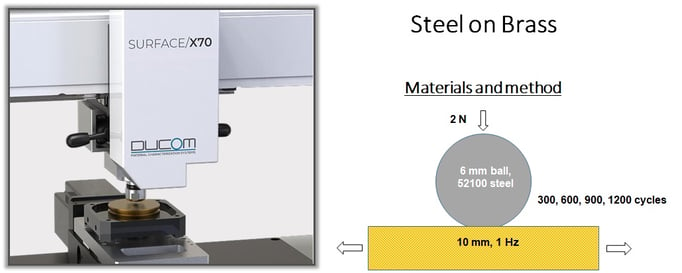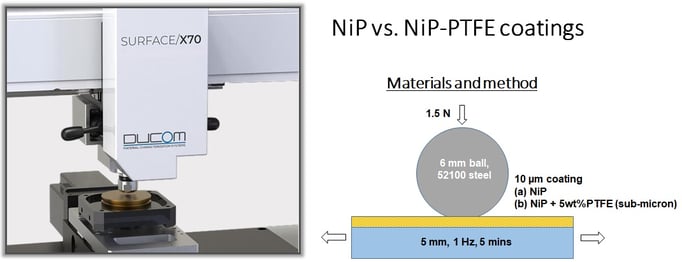
“A plethora of tests (sliding wear, erosion, corrosion, contact fatigue) are used to evaluate materials. The resulting surfaces show a wide range of wear topographies and damage features. Versatile techniques that can seamlessly capture the diversity of wear at different length scales are compelling”
The recent trends over last few years show manufacturers of tribometers selling 'in-situ' profilometers though such systems are truly 'in-line' and not 'in-situ' as real-time changes at the contact cannot be observed. Moreover, existing profilometers integrated with a tribometer operate on outdated technologies that have not evolved compared to the latest systems. (Read - How to Select a Profilometer?). A survey across several labs globally using the previous generation profilometry systems to understand the effectiveness revealed how the shortcomings vis-a-vis the expectations from the scientists.
 Complexity in operating and difficulty in capturing surface information in a reliable manner was one of the key takeaways. The data also suggested limitations with the older generation systems in imaging samples from other tribology tests such as erosion and high temperature wear.
Complexity in operating and difficulty in capturing surface information in a reliable manner was one of the key takeaways. The data also suggested limitations with the older generation systems in imaging samples from other tribology tests such as erosion and high temperature wear.
Even though, Ducom is an instruments manufacturer, we firmly believe that any scientific tool is means to an end defined by the research objectives and an instrument sale is just the beginning of that journey. Building on Ducom's core philosophy of Measure, Analyze and Understand, our latest range of 'X-series' imaging systems are designed to be intuitive to operate by any user with minimal training. In-built imaging techniques and algorithms make it effective for analyzing a wide variety of samples and deliver valuable analysis in the shortest possible time. The examples below are a few from our repository that address the expectations voiced in the market survey and highlight the versatility of the Surface X70 3D profilometer.
CASE REPORT - 1 (Friction & Wear Volume Evolution)


Linear reciprocation tests were conducted using a steel ball against brass. Tests were interrupted at 300, 600, 900, and 1200 cycles for imaging wear scars at the same location without removing the sample. Friction plot indicated a steady-state regime with a CoF ~ 0.25. From the wear depth, an average steady state material removal rate of ~ 0.02 μm/cycle was computed. Volumetric wear from the 3D topography maps provided a specific wear rate of ~ 1.88 × 10-3 mm3/N-m. Thus wear depth, wear volume and friction evolution at the same location could be correlated using X/70 3D profilometer integrated on Unitest.
CASE REPORT - 2 (Ultra-low wear coatings)
Summary of Results
Tests were conducted on UniTest integrated with both 2D (X10) and 3D (X70) surface imaging systems. NiP coating showed delamination with noisy friction during the test. On the contrary, NiP-PTFE coating showed gradual friction evolution and plastic deformation. Wear rate for NiP-PTFE coating (~ 0.002 μm/cycle) was significantly lower compared to NiP coating (~ 0.02 μm/cycle). Combining friction with in-line 2D optical imaging (true color) and 3D profilometry helped identify mechanisms associated with ultra-low wear coatings.
CASE REPORT - 3 (Imaging poorly reflective surfaces)
Summary of Results

Inconel 600 samples were tested over a range of temperatures 250, 500, 750 and 1000 °C on Air Jet Erosion Tester. The resulting surfaces post erosion test showed a wide range of surface reflectivity based on the test temperature. All samples irrespective of the reflectivity could be effortless imaged on X70 which otherwise would be challenging for the conventional 3D optical profilometers. A non-linear trend in erosion depth and volume especially between 500 and 750 °C was observed. This could be correlated to the abrupt change in high temperature resilience of IN 600 between 500 and 1000 °C i.e., combined elastic + plastic energy absorbed before fracture. [Ref- ASM Specialty Handbook: Heat-Resistant Materials, 1997]
In conclusion, the X-series range of Ducom non-contact 3D profilometer, was able to address limitations of older generation of optical profilometers integrated with a tribometer. Ease of use, intuitive interface and minimal training has prompted several labs to adopt the X-series surface imaging technologies on UniTest.
Fill the form below if you would like to schedule a personalized demo on UniTest X70 system for your lab.
Contact us for more information. Our experts are just a click away.

These Stories on wear
USA: +1 (847) 737-1590
India: +91 (80) 4080-5555
Netherlands: +31 (85) 065 74 10